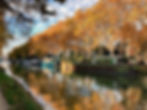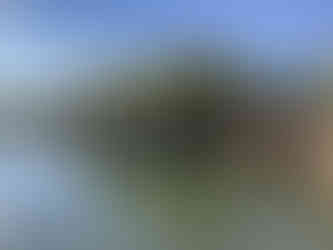The Canal du Midi: a link between the Atlantic Ocean and the Mediterranean Sea. ( Part one ) .
- Franck BRUGUIERE
- Dec 4, 2023
- 4 min read
Updated: Jun 10, 2024

The Canal du Midi is the indomitable link that connect the Atlantic Ocean and the Mediterranaen Sea.
It was inaugurated in 1681 and was construted by " Pierre Paul-Riquet " .
It was been listed as a UNESCO World Heritage since 1996.
The history of the Canal du Midi:

Since the 17th century, it has connected Toulouse to the Mediterranean Sea.
Originally, it was named " Canal Royal du Languedoc ", but the revolutionaries renamed it Canal du Midi in 1789.
It wasn't until 1856 that the Canal du Midi was extended to Bordeaux, creating a navigable waterway from the Atlantic Ocean to the Mediterranean Sea.
At that time, it was given the name " Canal des Deux Mers " , meaning " Canal of two Seas ".
It was Louis XIV who initiated the project, and this was mainly for one reason.
Indeed, trade by sea was very dangerous during that time.
Convoys were regularly attacked at the Strait of Gibraltar by pirates or foreign armies.
The King sought, therefore, a means to transport goods safely.
That's when the idea of constructing a canal connecting the Atlantic Ocean and the Mediterranean Sea came about.
Furtheremore, another advantage was to open up the Languedoc region and the city of Toulouse, known for their wealth and ressources, by improving their access to trade routes.
Indeed, the region cultivated wine, wheat, textiles, silk and salt.

Throughout its existence, the Canal du Midi was used for various types of transportation.
Firstly, it was used for river transport and the carriage of goods, with boats that were pulled by horses.
It was also utilized for the transport of mail, wine, and wheat.
Its decline occurred with the advent of the railroad in the mid-19th century.
The issue with the Canal is that it is expensive and slow.
It was Louis XIV who opened the navigation of the Canal du Midi in 1683.
The financing of its construction:

Indeed, financing was the number one challenge of this project.
Indeed, during that time, constructing such a monumental structure was financially challenging.
However, King Louis XIV and his advisors quickly found solutions to adress this problem :
An tax called the " gabelle " was created.
Pierre Paul Riquet contributed funds from his own resources.
Toll fees were established.
A tax on the ownership of boats was implemented.
The features of the Canal du Midi :

The Canal du Midi has directions of movement.
Indeed, the Toulouse/Sète direction is referred to as " upstream " and the opposite direction is called " downstream ".
For its time, this work is fabulous due to its scale.
It is 240 km long and requires 90 millions cubic meters of water.
It consists of :
400 woks of Art, 63 locks, 126 bridges, 55 aqueducts, 7 Canal bridges, 6 dams, one tunnel and one spillway.
It consists of numerous Ports :
The Port of the Embouchure in Toulouse :

That's where you can see the access to the " Canal de Brienne " which runs through the city, and the " Canal Latéral ", which provides access to the Garonne River.
The Port of Saint-Sauveur:

Yes, its the marina of Toulouse, equipped with all the necessary amenities for boaters.
The Port of Castelnaudary:

It is called the " Grand Bassin " and it spans over 7 hectares in size.
It consists of the marina that we see in the photo, as well as another large basin for smaller boats.
The Port of Ramonville, in Toulouse area:

It is a marina that was mainly created for large barges.
The Port Lauraguais:

It si the technical port for maritime vessels. Small electric boats can be rented to navigate on the Canal du Midi.
The issue of water supply for the Canal du Midi:
Indeed, the water supply was the number one challenge of this project, which caused many sleepless nights for Pierre Paul Riquet.
But to his knowledge of thanks hydrology, he found solutions to overcome this problem.
At the level of the Montagne Noire the solution was found at the " Naurouze threshold " :
Indeed, the Naurouze threshold is the highest point along the course of the Canal du Midi. It was a brillant idea to provide the Canal du Midi with water.
Exactly, all the rivers flowing from the Montagne Noire were redirected towards three storage basins in order to supply water to the Canal.
The lake of Saint-Ferréol :

The Canal du Midi was connected to the lake of Saint-Ferréol in order to avoid the risk of excessive floods from the Garonne River, which could have brought large amounts of sediment into the canal, potentially hindering its operation.
Over time, it was found that this solution became effective.
The " Château of Bonrepos-Riquet " is an important site that is part of the history of the Canal du Midi:
In 1651, Pierre Paul-Riquet decided to settle in Bonrepos to study the water management issuves of the Canal du Midi.
Indeed, Château de " Bonrepos-Riquet " it as classic-style castle that has been classified as a historical monument since 2008.
The castle and the orangery are classified as UNESCO World Heritage sites.
In the gardens and Parks, one can see the hydraulic structures designed by Pierre Paul Riquet as preparations for the construction of the " Canal du Midi ".
The garden is classified as a ' remarkable garden ".
The " Canal du Midi " , in modern times:
It serves pleasure boaters and river tourism.
Along its entire length, the Canal du Midi features cycling paths that offer many beautiful opportunities for bike ride.
Throughout the journey, you will come across many classified locks.
In some of them, you can enjoy a meal or refreshments at guiguettes " waterside taverns ".
These guiguette are indeed very pleasant and they serve local and regional dishes in a friendly atmosphere.
Indeed, a major issue affecting Canal du Midi is the presence on a fungus that attacks the plane trees along its banks.
The most affected trees are being replaced, and there are donation programs in place to help preserve this exceptional heritage.
Since 1991, the management of the Canal du Midi has been entrusted to " Voix navigation authority in France " .
Alright, my friends, that's all for today.
I hope you will enjoy reading this post about the beautiful work that is the Canal du Midi.
Welcome in Toulouse.
The Blog from Toulouse.
Greetings Franck.























